Union Pacific

Brief Synopsis
Cast & Crew
Cecil B. De Mille
Barbara Stanwyck
Joel Mccrea
Akim Tamiroff
Robert Preston
Lynne Overman
Film Details
Technical Specs

Synopsis
Bank president Asa M. Barrows stands to make a fortune if the Central Pacific Railroad reaches Ogden, Utah before the Union Pacific. Consequently, to prevent the Union Pacific from reaching Ogden first, Barrows hires gambler Sid Campeau to sabotage the railraod. Three years later, as the first engine, piloted by engineer Monahan, leaves Cheyenne, the Union Pacific hires trouble shooter Jeff Butler to keep order on the railroad. Jeff is faced with Indian raids and the corruption of the men by whiskey and gambling, all engineered by Campeau and his partner, Dick Allen. Dick and Jeff are old army pals who now find themselves fighting on opposite sides. They also find themselves in competition for the affection of post mistress Mollie Monahan, the engineer's daughter, who favors Jeff. When Campeau attempts to stir the men up over late wages, General Ulysses S. Grant coerces Barrows into lending money to the railroad. Barrows plans to recoup his loan by robbing the payroll train, and Campeau sends Dick to do the job. Dick steals the pay sack and rides off, followed quickly by Jeff. After hiding the sack in Mollie's mail car, Dick returns to retrieve it, only to find Jeff waiting. When Campeau and his thugs also appear, Mollie hastily accepts Dick's engagement ring in return for Jeff's safe passage, and insists that Dick give back the money. Jeff then leads his men to Campeau's saloon where, after extracting a confession from Campeau, they destroy the premises. Next, Jeff goes to the church to arrest Dick for the robbery, but arrives too late to stop the wedding. Mollie allows her new husband to escape and is fired by the railroad. The next morning, Dick appears to claim his reluctant bride, but his nuptial embrace is interrupted as the Indians attack and the train is derailed. Jeff, Mollie, and Dick, the only survivors, join forces to telegraph Cheyenne for help. As they fight for their lives, the troops race to rescue them, braving burning bridges to arrive in time. In the gunfire, Mollie is shot and Jeff allows Dick to escape. Before he leaves, Dick tells Jeff of Barrows' duplicity and promises to meet Mollie in Ogden. To reach Ogden in time, the railroad has to traverse a track built over snow, which collapses under the weight of the engine, killing Monahan. The engineer does not die in vain, however, for the Union Pacific thwarts Barrows and wins the race. As the last spike is driven, Dick is killed by Campeau, and thus, as all obstacles are removed from the union of the rails, so too are they removed from the union of Mollie and Jeff.

Director

Cecil B. De Mille
Cast

Barbara Stanwyck

Joel Mccrea

Akim Tamiroff

Robert Preston
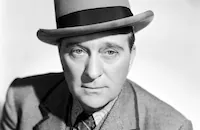
Lynne Overman

Brian Donlevy

Anthony Quinn

Stanley Ridges

Henry Kolker
Francis Macdonald
Willard Robertson
Harold Goodwin

Evelyn Keyes

Richard Lane
William Haade

Regis Toomey
Syd Saylor

J. M. Kerrigan

Fuzzy Knight
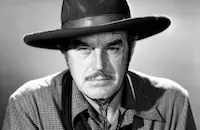
Harry Woods

Lon Chaney Jr.

Joseph Crehan
Julia Faye
Shelia Darcy
Hugh Macdonald
Noble Johnson
Sonny Chorre
Iron Eyes Cody
James P. Spencer
Tony Urchel
Chief Thundercloud
Greg Whitespear

Mala
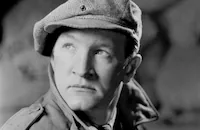
Joseph Sawyer
May Beatty
Ruth Warren
Mike Driscoll
Richard Robles
Bobbie La Salle
Evelyn Luckey
Calla Waltz
William Pawley

Robert Barrat
Earl Askam
John Marston

Byron Foulger
Selmer Jackson
Morgan Wallace

Russell Hicks
Ernie Adams
William J. Worthington
Guy Usher
Gus Glassmire
Stanley Andrews
Paul Everton
Jack Pennick
Margaret Roach
Beth Hartman
Si Jenks
Horace Murphy
Albert Taylor
David Clyde
Tim Mahoney
John Power
George Guhl
Pat Hartigan
Dave Thursby
Walter Long

James Flavin
Emory Parnell
Patrick Moriarity
Ed Lesaint
Ed Schaefer
Jim Farley
Frank Mills
E. A. Laidlaw
Ed Brady
Michael Slade

Robert Stevenson
T. C. Jacks
Dick Rush
Douglas Gordon
Cy Ring
Mark Strong
Hal Craig

Nestor Paiva
Paul Everton
Guy Usher
Wylie Grant
Albert Petit
Jack Richardson
J. C. Fowler
Alexander Leftwich
Mitchell Ingraham
Frances Rather
George Anderson
Joe Gilbert
Lane Chandler
Francis Sayles
Stanhope Wheatcroft
Genevieve Bell
Viola Louie
Ida May
Inez Seabury
Doreen Pastor
Jack Murphy
Jim Pierce
Dick Alexander
Frank Yaconelli
Oscar G. Hendrian

Max Davidson
Ken Gibson
Victor De Linsky
Chuck Hamilton
Louis Natheaux
Elmo Lincoln
Allen Connor
Wilbur Mack
Jack Clifford
Frank Shannon Old Man
Willard Robertson
Captain E. H. Calvert
George Regas
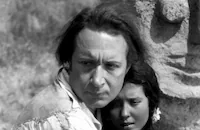
Monte Blue
Charles Stevens
Dick Botiller
Frank Lackteen
Edward Peil Sr.
Lou Short
John Merton
Sam Mcdaniel
George Magrill
Jack Chapin
Buddy Roosevelt
Duke York
Sam Ash
Marty Faust
Charles Mcavoy
Gus Glassmire
James Mcnamara
Alphonse De Cruz
Leon Holmes
Russ Powell
James Kelso
Dick Gordon
Peter Du Rey
David Newell
Eddie Featherstone
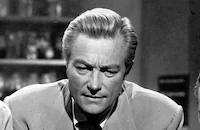
Richard Denning

Mary Mclaren
Jane Keckley
Steve Carruthers
John Harmon
Archie Twitchell
Adrian Morris
Jack Kennedy
Sid D'albrook
Edwin Stanley

Edward Keane
J. W. Johnston
John G. Fee
John M. Sullivan
Nora Cecil
Crew
Roland Anderson
Charles Barton
Anne Bauchens
Lucius Beebe
Frederick Hazlitt Brennan
Russ Brown
John Cope
Jack Cunningham
L. R. Davison
Cecil B. De Mille
Walter Deleon
Hans Dreier
Farciot Edouart
A. E. Freudeman
Dan Sayre Groesbeck
Harry Hogan
James Hogan
Gordon Jennings
Sigmund Krumgold
Jesse Lasky Jr.
William Lebaron
John Leipold
Harry Lindgren
Louis R. Lipstone
Carley Livingston
Jeanie Macpherson
Edwin Maxwell
Victor Milner
William H. Pine
Arthur Rosson
Loren L. Ryder
Edward Salven
Harry Scott
C. Gardner Sullivan
George Tomasini
Visart
Dewey Wrigley
A. C. Zoulis

Videos
Movie Clip




Trailer
Hosted Intro
Film Details
Technical Specs

Award Nominations
Best Special Effects
Articles
Union Pacific
Following the success of his historical pirate film The Buccaneer (1938), the director was torn between making his next film one about airplanes, ships or trains. He had settled on a film on the discovery of Hudson's Bay when he learned another studio was working on a similar project and dropped the idea. Then publisher Martin Quigley suggested a film about the building of the transcontinental railroad. Unable to decide whether to focus on the Union Pacific or Santa Fe line, DeMille flipped a coin, and the former won.
DeMille secured the cooperation of the Union Pacific Railroad, which gave the production access to records and plans from the railroad's construction. They also loaned them four locomotives used in the 1860s, 37 cars from the period and the crews to run them, while making miles of track in Utah available for shooting. In fact, Union Pacific required so many shots of trains running Paramount had to secure a railroad operating license from the Interstate Commerce Commission. Eventually, DeMille became the largest private owner of railroad equipment in the U.S.
The entire production was done on the lavish scale typical of DeMille (all that was lacking was color and Union Pacific would prove to be the director's last black and white film). Paramount rebuilt the town of Cheyenne, Wyoming, on the film's Utah location and engaged hundreds of Navajos for the various spectacular raids on the railroad. The driving of the golden spike joining East to West was staged in California's Canoga Park using the original spike, on loan from Sanford University.
DeMille directed for several weeks from a stretcher. Some sources attribute this to a collapse from exhaustion, though DeMille and other contemporary sources suggest that he had to have surgery shortly before production started and couldn't delay shooting. Either way, crewmembers had to carry him from set to set and a special platform was added to the camera boom so he could supervise crane shots.
The director originally wanted Jean Arthur, who had starred in The Plainsman, for the female lead. Studio publicity also named Irene Dunne as a potential star (alongside Joel McCrea and Fredric March). Instead, Barbara Stanwyck took on the role. She quickly proved herself to DeMille by insisting on doing her own stunts, always arriving on set early and fully prepared and never complaining about difficult location conditions. In his memoirs, he would answer the question most Hollywood directors dread, "Who is your favorite actress?" by writing, "...I have never worked with an actress who was more co-operative, less temperamental, and a better workman, to use my term of highest compliment, than Barbara Stanwyck....Barbara's name is the first that comes to mind, as one whom a director can always count on to do her work with all her heart".
DeMille was particularly fortunate in his supporting players. In only his fourth film, Robert Preston played the third leg of a romantic triangle with Stanwyck and McCrea. It was the role that put him over with audiences, paving the way for years as a reliable second lead at Paramount (before he achieved stardom on Broadway in The Music Man). When Charles Bickford refused the role of the villain, and J. Carroll Naish had a scheduling conflict, Brian Donlevy took it on with the suave menace that would make him one of the screen's most memorable bad guys. In addition, Lynne Overman, who took over a comic relief role originally given to Bob Burns and then Walter Brennan, played so well off Akim Tamiroff that DeMille had them put into his next film, Northwest Mounted Police (1940), for more of the same.
For one supporting player, however, Union Pacific marked a temporary parting of the ways with DeMille. Although Anthony Quinn was the director's son-in-law, there was no nepotism involved in his casting in a small role as a gambler. The actor was under contract at Paramount, and the role was one of many minor parts to which the actor, whose ethnicity made him difficult to cast at the time, found himself consigned. He didn't want to play the part, but with Union Pacific tying up so much production space on the lot, he couldn't afford to turn it down. But despite what he considered a thankless role, he still had to put up with charges of preferential treatment. When DeMille invited him to lunch one day, a gossip item reported the event as if the actor considered himself too good to eat with the rest of the cast. At that point, Quinn decided to leave Paramount as quickly as possible. He would not work with his father-in-law again until the actor took over the direction of DeMille's 1958 remake of The Buccaneer, by which point he had won two Oscars® and begun his climb to international stardom.
In recognition of the film's epic scale, Paramount gave Union Pacific what was advertised as "the biggest premiere in movie history." One of the period locomotives was attached to a modern train, which carried DeMille and the film's stars to Omaha, Nebraska, (with publicity stops along the way) for three days of parties and parades, including a mammoth costume ball. The premiere screening was launched by President Franklin Roosevelt pushing a special button in the White House. After that, DeMille and cast members continued the train ride for 15 days until they reached the East Coast.
With such a massive build-up, DeMille's epic touch and a top cast, Union Pacific was destined for box-office success. In fact, it was the top-grossing Western of its year, returning a handsome profit on its million-dollar cost and easily out-selling other contemporary Westerns that were held in higher critical esteem. Although it lost the only Oscar® for which it was nominated, Best Special Effects, it brought DeMille the Golden Palm at the Cannes Film Festival. In 1975, it would be honored with a special Western Heritage Award recognizing great Westerns made before the award's 1961 inception.
Producer-Director: Cecil B. DeMille
Screenplay: Walter DeLeon, C. Gardner Sullivan, Jesse Lasky, Jr.
Based on the novel Trouble Shooters by Ernest Haycox
Cinematography: Victor Milner, Dewey Wrigley
Art Direction: Hans Dreier, Roland Anderson
Music: George Antheil, Sigmund Krumgold
Cast: Barbara Stanwyck (Mollie Monahan), Joel McCrea (Jeff Butler), Akim Tamiroff (Fiesta), Robert Preston (Dick Allen), Lynne Overman (Leach Overmile), Brian Donlevy (Sid Campeau), Robert Barrat (Duke Ring), Anthony Quinn (Jack Cordray), Stanley Ridges (Gen. Casement), Henry Kolker (Asa M. Barrows), Evelyn Keyes (Mrs. Calvin), Regis Toomey (Paddy O'Rourke), J.M. Kerrigan (Monahan), Fuzzy Knight (Cookie), Lon Chaney, Jr. (Dollarhide), Joseph Crehan (Gen. U.S. Grant), Byron Foulger (Andrew Whipple), Monte Blue (Indian), Ward Bond (Tracklayer), Richard Denning (Reporter), Will Geer (Foreman), Chief Thundercloud, Iron Eyes Cody (Indian Braves), Noble Johnson (Native American Shooting Piano), Elmo Lincoln (Card Player), Nestor Paiva (C.P. Conductor). BW-136m. Closed captioning.
by Frank Miller
SOURCES:
The Autobiography of Cecil B. DeMille by Cecil B. DeMille

Union Pacific
Quotes
I don't believe I'll need bodyguards.- Jeff Butler
You'll need 'em, alright.- General Casement
You think we no good, eh?- Fiesta
No, it's not that...- Jeff Butler
We've had a lot of experience, Captain. We bodyguarded the last two troubleshooters right up to the very minute they was killed.- Leach Overmile
That Jeff Butler doesn't have all his brains in his holster- Monahan
Trivia
The world premiere in Omaha, Nebraska, was a three-day celebration which drew 250,000 people, doubling the population of the city and requiring the National Guard to help control order. The special train enroute from Hollywood to Omaha, carrying Cecil B. DeMille, and stars Barbara Stanwyck and Joel McCrea, took three days and made stops along the way drawing large crowds. The film was shown in three theaters simultaneously; President Franklin D. Roosevelt was reported to have started the premiere proceedings by pressing a button in Washington, D.C. which opened the civic auditorium. An ad stated that the premiere, which involved parades, radio broadcasts and a banquet, was the biggest in motion picture history. An antique train continued on a 15-day coast-to-coast promotional tour, stopping at thirty cities around the country.
According to a news item in the Hollywood Reporter, Cecil B. DeMille directed much of the film from a stretcher, because of an operation he had months earlier. However, studio records indicate DeMille collapsed from the strain of directing three units simultaneously, and used a stretcher for about two weeks.
The gold spike used at the ceremony to mark the end of the construction was the same spike actually used in the May 10, 1869 event, on loan from Stanford University.
For the Indian attack on the train, Paramount hired 100 Navajo Indian extras.
The company had hired the use of many local pinto horses for the filming of the Indian attack on the train. During filming, local southern Utah cowboys were hired to round up the horses, which would typically scatter and sometimes stampede because of the noise and confusion of these scenes, with shooting, yelling, and yards of unfamiliar cloth on the horses along with kettles tied to their necks and tails.
In order to operate so many trains required by the production, Paramount had to get a regulation railroad operating license from the Interstate Commerce Commission.
Notes
April 1939 Hollywood Reporter news items reported that Union Pacific's world premiere in Omaha, Nebraska was a gala "three-day celebration" that drew crowds of over 250,000, instantly doubling the city's population and requiring the deployment of eight national guard troops to help local authorities maintain order. Large crowds were also said to have gathered at many stops along the train route from Hollywood to Omaha, as it was publicized that a special train carrying, among others, producer and director Cecil B. De Mille, and stars Barbara Stanwyck and Joel McCrea, was making its way to Nebraska for the event. The film's premiere took place at three Omaha theaters simultaneously. A April 22, 1939 Hollywood Reporter news item noted that President Franklin Delano Roosevelt was to officially start the premiere proceedings by pressing a button in Washington, D.C. that would open Omaha's civic auditorium. An advertisement in Hollywood Reporter claimed that Union Pacific's premiere, which was accompanied by parades, special radio broadcasts and a banquet, was the "biggest world premiere in motion picture history." The ad also notes that following the premiere, De Mille was joined by many of the film's stars aboard an antique train for the continuation of the fifteen-day, coast-to-coast promotional tour, which was scheduled to stop at thirty cities around the country.
According to material contained in the Paramount Story Files at the AMPAS Library, a treatment dated May 31, 1938 was written by Frederick Hazlitt Brennan for actors Fredric March, Joel McCrea and Irene Dunne. Hollywood Reporter pre-release news items and early production charts indicate that actor Charles Bickford was originally cast in the role played by Brian Donlevy. According to Hollywood Reporter, when Bickford "stepped out of the part because he didn't like it," he was replaced by J. Carrol Naish, who could not appear in the film due to a scheduling conflict with his assignment on Paramount's Federal Offense. Although a Hollywood Reporter pre-production news item announced that actor Porter Hall had been signed for a feature role as the engineer, he did not appear in the released film. Modern sources indicate that De Mille's first choice for the female lead was Jean Arthur, and that Lynne Overman took over the role previously assigned to Bob Burns and Walter Brennan.
According to a pre-release Hollywood Reporter news item, De Mille directed the film from a stretcher because he was recuperating from an operation he underwent months earlier. Studio records, however, report that De Mille was confined to a stretcher for two weeks following his collapse, which was said to have resulted from the strain of directing three units on the film simultaneously. A December 12, 1938 Hollywood Reporter news item notes that while a third unit was put to work under director James Hogan, second unit director Arthur Rosson was filming in Cache, Oklahoma. A 27 December Hollywood Reporter news item indicates that Rosson's second unit was dispatched to the Mojave Desert, California for location shooting.
Other shooting locations noted in contemporary sources were Canoga Park, Stockton and Sonora, California and Cedar City and Iron Springs, Utah. Studio publicity material claims that one hundred Navajo Indians were used as extras in scenes filmed in Cedar City, and that a replica of the town of Cheyenne, Wyoming was built at the Iron Springs location, where approximately six miles of railroad tracks were laid for the production. According to an article in Life magazine on the making of the film, De Mille acquired more railroad cars than anyone outside the railroad industry had ever owned before. In order to legally operate its own private railroad, Paramount, according to publicity material, acquired a regulation railroad operating license, which was granted by the Interstate Commerce Commission. Technical advisor Lucius Beebe was a well-known columnist for New York Herald Tribune.
Time magazine reported that De Mille shot a total of 205,000 feet of film for the picture, which contemporary sources indicate was a $1,000,000 production. Farciot Edouart, Gordon Jennings and Loren L. Ryder were nominated for an Academy Award for their Special Effects work on the film.

Miscellaneous Notes
Released in United States 1939
Released in United States March 1976
Re-released in United States on Video March 28, 1995
Released in United States 1939
Released in United States March 1976 (Shown at FILMEX: Los Angeles International Film Exposition (The 48-Hour Cowboy Movie Marathon) March 18-31, 1976.)
Re-released in United States on Video March 28, 1995















